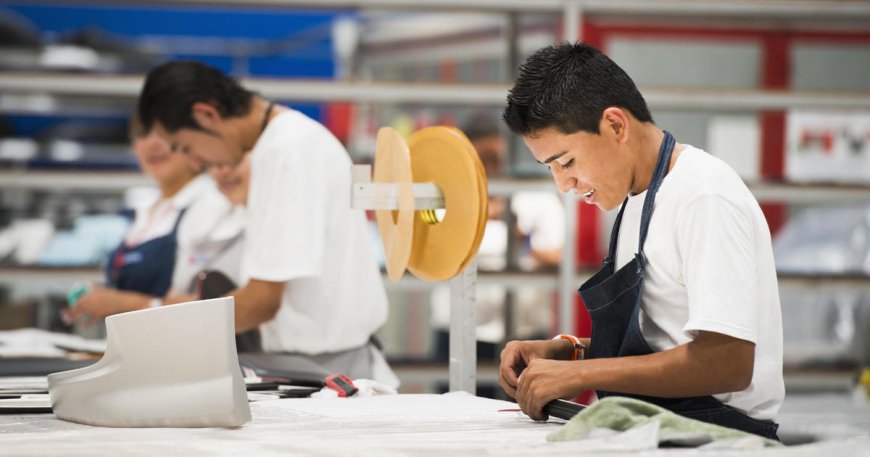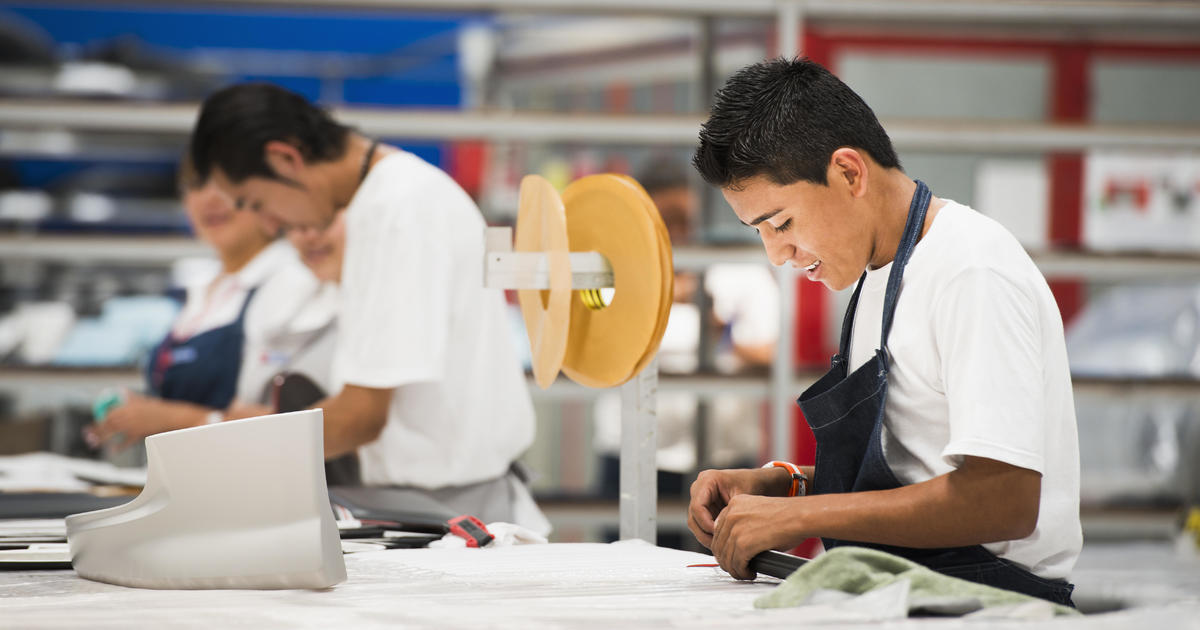More kids are working dangerous jobs amid weaker labor laws, child migration
More kids are working dangerous jobs amid weaker labor laws, child migration CBS News

A Troubling Trend: Increase in Child Labor Violations in the U.S.

In the last 10 months, federal regulators have found almost 4,500 children working in violation of federal child labor laws, an increase of 44% from a year earlier, according to the Labor Department. Some of these children were operating dangerous machinery, such as deep fryers and meat-processing equipment.
Causes and Impact
- The surge in cases of illegal child labor is occurring as some states are weakening their child labor laws.
- Lawmakers have also pointed to an influx of unaccompanied minors crossing into the U.S. as an underlying cause.
- Almost 400,000 children have entered the U.S. alone since 2021, with numbers spiking in recent years compared to 2020.
A New York Times investigation published earlier this year revealed that the use of child migrant labor in factories across the U.S. has “exploded” since 2021, highlighting a breakdown in the systems meant to protect children. Some of these children entered the U.S. alone and were pressured by relatives or friends to work in industries such as meat-packing plants and food processors.
These jobs can be fatal, as seen in the case of a 16-year-old boy from Guatemala who died in a machinery-related incident at a poultry plant. The boy was too young to be legally working at the plant.
Enforcement and Consequences
- Employers have faced fines of $6.6 million since October, an 87% increase from a year earlier.
- Government regulators have closed 765 child labor cases since October and have another 700 open cases.
Rolling Back Labor Laws
Some states are rolling back child labor regulations, arguing that these changes provide parents with more flexibility in helping their kids get jobs. For example, Arkansas recently weakened some child labor protections, making it easier for children under 16 to get hired. Additionally, at least nine states have introduced laws that would allow children as young as 14 to serve alcohol.
However, these changes come with safety risks for children working in factories or serving alcohol. The Economic Policy Institute notes that serving alcohol puts kids at risk of sexual harassment and increases the chances of alcohol consumption among child workers.
Sustainable Development Goals (SDGs)
The issue of child labor in the U.S. is directly related to several SDGs:
- Goal 4: Quality Education – Child labor prevents children from accessing education and hampers their long-term development.
- Goal 8: Decent Work and Economic Growth – Child labor violates labor laws and exposes children to hazardous working conditions.
- Goal 10: Reduced Inequalities – Child labor disproportionately affects vulnerable and marginalized communities.
- Goal 16: Peace, Justice, and Strong Institutions – Strengthening child labor laws and enforcement contributes to a just and equitable society.
“Child labor is an issue that gets to the heart of who we are as a country and who we want to be,” said acting Secretary of Labor Julie Su. “[W]e believe that any child working in a dangerous or hazardous environment is one child too many.”
More from CBS News
SDGs, Targets, and Indicators
-
SDG 8: Decent Work and Economic Growth
- Target 8.7: Take immediate and effective measures to eradicate forced labor, end modern slavery and human trafficking, and secure the prohibition and elimination of the worst forms of child labor.
- Indicator 8.7.1: Proportion and number of children aged 5-17 years engaged in child labor, by sex and age group (relevant for measuring progress towards eradicating child labor).
-
SDG 4: Quality Education
- Target 4.4: By 2030, substantially increase the number of youth and adults who have relevant skills, including technical and vocational skills, for employment, decent jobs, and entrepreneurship.
- Indicator 4.4.1: Proportion of youth and adults with information and communications technology (ICT) skills, by type of skill (relevant for measuring progress towards increasing relevant skills for employment).
Analysis
The article highlights the issue of child labor in the United States, specifically the increase in children working in dangerous jobs in violation of federal child labor laws. Based on the content of the article, the following SDGs, targets, and indicators can be identified:
1. SDG 8: Decent Work and Economic Growth
This SDG is directly connected to the issues discussed in the article as it focuses on promoting inclusive and sustainable economic growth, full and productive employment, and decent work for all. The increase in child labor in dangerous jobs violates the principles of decent work and poses risks to the lives and well-being of children.
- Target 8.7: Take immediate and effective measures to eradicate forced labor, end modern slavery and human trafficking, and secure the prohibition and elimination of the worst forms of child labor.
- Indicator 8.7.1: Proportion and number of children aged 5-17 years engaged in child labor, by sex and age group (relevant for measuring progress towards eradicating child labor).
The target 8.7 specifically addresses the issue of child labor and calls for the prohibition and elimination of the worst forms of child labor. The indicator 8.7.1 measures the proportion and number of children engaged in child labor, which can be used to assess progress towards eradicating child labor.
2. SDG 4: Quality Education
This SDG is indirectly connected to the issues discussed in the article as it focuses on ensuring inclusive and equitable quality education and promoting lifelong learning opportunities for all. Access to quality education plays a crucial role in preventing child labor and providing children with alternative opportunities.
- Target 4.4: By 2030, substantially increase the number of youth and adults who have relevant skills, including technical and vocational skills, for employment, decent jobs, and entrepreneurship.
- Indicator 4.4.1: Proportion of youth and adults with information and communications technology (ICT) skills, by type of skill (relevant for measuring progress towards increasing relevant skills for employment).
The target 4.4 aims to increase the number of youth and adults with relevant skills for employment, including technical and vocational skills. By providing quality education and skills training, children can have better opportunities for decent jobs and entrepreneurship, reducing the likelihood of engaging in child labor. The indicator 4.4.1 measures the proportion of youth and adults with ICT skills, which is relevant for assessing progress towards increasing relevant skills for employment.
Table: SDGs, Targets, and Indicators
| SDGs | Targets | Indicators |
|---|---|---|
| SDG 8: Decent Work and Economic Growth | Target 8.7: Take immediate and effective measures to eradicate forced labor, end modern slavery and human trafficking, and secure the prohibition and elimination of the worst forms of child labor. | Indicator 8.7.1: Proportion and number of children aged 5-17 years engaged in child labor, by sex and age group (relevant for measuring progress towards eradicating child labor). |
| SDG 4: Quality Education | Target 4.4: By 2030, substantially increase the number of youth and adults who have relevant skills, including technical and vocational skills, for employment, decent jobs, and entrepreneurship. | Indicator 4.4.1: Proportion of youth and adults with information and communications technology (ICT) skills, by type of skill (relevant for measuring progress towards increasing relevant skills for employment). |
Behold! This splendid article springs forth from the wellspring of knowledge, shaped by a wondrous proprietary AI technology that delved into a vast ocean of data, illuminating the path towards the Sustainable Development Goals. Remember that all rights are reserved by SDG Investors LLC, empowering us to champion progress together.
Source: cbsnews.com

Join us, as fellow seekers of change, on a transformative journey at https://sdgtalks.ai/welcome, where you can become a member and actively contribute to shaping a brighter future.







